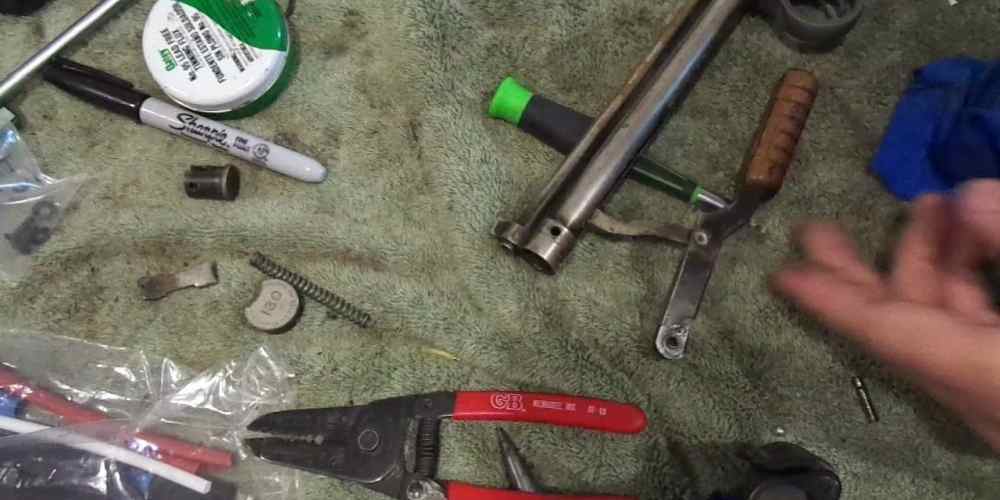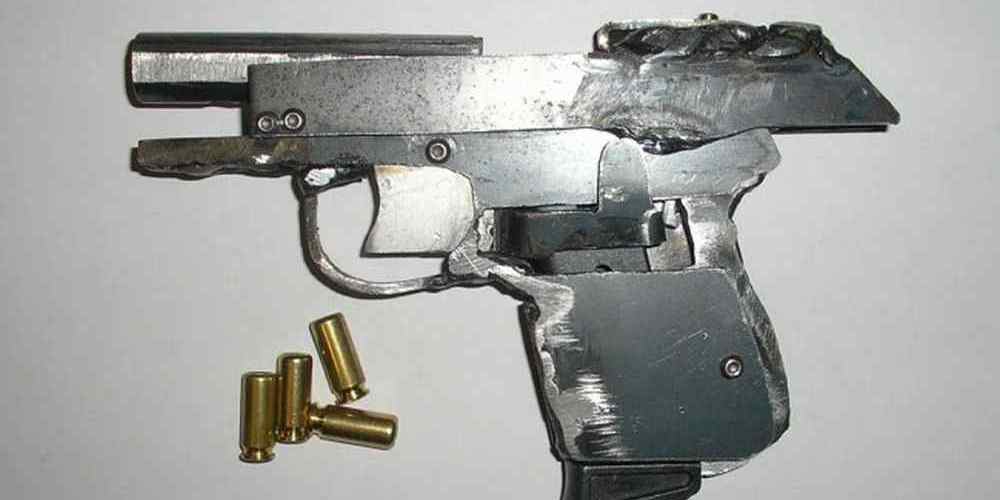Revive your favorite reads with magazine repair solutions.
Tips for Repairing Damaged Magazines
Magazines are a great source of information, entertainment, and inspiration. Whether you enjoy flipping through the glossy pages of fashion magazines, catching up on the latest news in a current affairs publication, or immersing yourself in a niche hobby magazine, there’s something special about holding a physical copy in your hands. However, magazines are not immune to wear and tear, and it’s not uncommon for them to get damaged over time. So, when your favorite magazine gets torn, creased, or stained, what should you do? Should you attempt to repair it, or is it better to just replace it with a new copy?
One of the first things to consider when deciding whether to repair or replace a damaged magazine is the extent of the damage. Minor tears, creases, and stains can often be fixed with a little bit of effort and some basic supplies. For example, if a page is torn, you can carefully glue it back together using a small amount of clear adhesive. If a page is creased, you can try gently ironing it with a low heat setting to smooth out the wrinkles. And if a page is stained, you can use a damp cloth or a gentle cleaning solution to remove the mark.
When attempting to repair a damaged magazine, it’s important to be gentle and patient. Rushing through the process or using harsh chemicals can cause further damage and potentially ruin the magazine beyond repair. Take your time, work carefully, and always test any cleaning solutions or adhesives on a small, inconspicuous area of the magazine first to make sure they won’t cause any harm.
If the damage to your magazine is more severe or if you’re not confident in your ability to repair it yourself, you may want to consider seeking professional help. There are companies that specialize in magazine restoration and conservation, and they have the expertise and tools to repair even the most damaged publications. While this option may be more expensive than attempting to repair the magazine yourself, it can be worth it if the magazine holds sentimental value or if it’s a rare or collectible edition.
On the other hand, there are times when it may be more practical to simply replace a damaged magazine with a new copy. If the damage is extensive, if the magazine is easily replaceable, or if you simply don’t have the time or resources to repair it, buying a new copy may be the best option. Many magazines are available for purchase online or at newsstands, and you may even be able to find back issues or digital copies if the magazine is no longer in print.
Ultimately, whether you choose to repair or replace a damaged magazine depends on your personal preferences, the extent of the damage, and the value of the publication to you. If you enjoy the challenge of restoring a damaged magazine and have the time and patience to do so, repairing it can be a rewarding experience. However, if the damage is too severe or if you simply prefer the convenience of buying a new copy, replacing the magazine may be the best choice. Whichever option you choose, remember to handle your magazines with care to prevent future damage and enjoy the reading experience they provide.
How to Prevent Magazine Damage
Magazines are a popular form of entertainment and information for many people. Whether you enjoy flipping through the pages of a fashion magazine, catching up on the latest news in a current affairs publication, or immersing yourself in a niche hobby magazine, there’s something special about holding a physical copy in your hands. However, magazines are not immune to damage, whether it’s from mishandling, accidents, or simply wear and tear over time.
If you find yourself with a damaged magazine, you may be wondering whether it’s worth repairing or if it’s better to replace it altogether. The answer to this question depends on the extent of the damage and the value of the magazine to you. In this article, we’ll explore some common types of magazine damage and discuss whether it’s possible to repair them or if it’s best to start fresh with a new copy.

One of the most common types of magazine damage is tears and rips. Whether it’s from rough handling, being dropped, or accidentally catching on something sharp, tears and rips can detract from the overall appearance of a magazine. If the tear is small and not in a critical area, such as the cover or a page with important content, you may be able to repair it with clear tape or glue. However, if the tear is large or in a crucial area, it may be best to replace the magazine.
Another common type of magazine damage is water damage. Whether it’s from a spilled drink, a leaky roof, or high humidity, water can wreak havoc on a magazine, causing pages to warp, stick together, or even tear. If your magazine has suffered water damage, it’s important to act quickly to prevent further deterioration. Gently blot the pages with a clean, dry cloth to remove excess moisture, then lay the magazine flat to dry. Once the magazine is completely dry, you can carefully separate any stuck-together pages and assess the extent of the damage. If the pages are too warped or torn to salvage, it may be time to replace the magazine.
In addition to tears, rips, and water damage, magazines can also suffer from creases, folds, and bent corners. While these types of damage may not be as severe as tears or water damage, they can still detract from the overall appearance of the magazine. If your magazine has creases or folds, you may be able to gently press them out with a heavy book or object. For bent corners, you can try using a bone folder or similar tool to carefully reshape the corner. However, if the damage is too severe or if the magazine is a valuable collectible, it may be best to replace it.
Ultimately, whether you choose to repair or replace a damaged magazine depends on the extent of the damage and the value of the magazine to you. If the damage is minor and the magazine holds sentimental value, it may be worth trying to repair it. However, if the damage is severe or if the magazine is easily replaceable, it may be best to start fresh with a new copy. By taking care to prevent damage and acting quickly to address any issues that arise, you can ensure that your magazines stay in good condition for years to come.
When to Replace a Damaged Magazine
Magazines are a popular form of reading material that many people enjoy. Whether you subscribe to a favorite magazine or pick up a copy at the newsstand, it can be disappointing when your magazine becomes damaged. From torn pages to water damage, there are a variety of issues that can affect the quality of your reading experience. When faced with a damaged magazine, the question arises: should you repair it or replace it?
One of the first things to consider when deciding whether to repair or replace a damaged magazine is the extent of the damage. If the damage is minimal, such as a small tear or crease, it may be possible to repair the magazine yourself. Using clear tape or glue, you can carefully mend the tear or crease to restore the magazine to its original condition. However, if the damage is more severe, such as water damage or a large tear, it may be best to replace the magazine altogether.
Another factor to consider when deciding whether to repair or replace a damaged magazine is the value of the magazine. If the magazine is a rare or collectible edition, it may be worth the time and effort to repair it. By carefully repairing the damage, you can preserve the value of the magazine and continue to enjoy it for years to come. On the other hand, if the magazine is a common issue or easily replaceable, it may be more cost-effective to simply replace it.
When deciding whether to repair or replace a damaged magazine, it is also important to consider the overall condition of the magazine. If the magazine is already in poor condition, with multiple tears or creases, it may not be worth the time and effort to repair it. In this case, it may be best to replace the magazine and start fresh with a new copy. By replacing the damaged magazine, you can ensure that you have a high-quality reading experience without the distraction of damaged pages.
In some cases, the decision to repair or replace a damaged magazine may be influenced by personal preference. Some people enjoy the process of repairing damaged items and take pride in restoring them to their original condition. If you have the time and patience to repair a damaged magazine, it can be a rewarding experience. On the other hand, if you prefer the convenience of simply replacing a damaged magazine, that is also a valid option.
Ultimately, the decision to repair or replace a damaged magazine is a personal one that depends on the extent of the damage, the value of the magazine, and your own preferences. Whether you choose to repair a damaged magazine yourself or replace it with a new copy, the most important thing is to continue enjoying the reading experience. By taking care of your magazines and addressing any damage promptly, you can ensure that you have a collection of magazines that you can enjoy for years to come.
DIY Magazine Repair Techniques
Magazines are a great source of information, entertainment, and inspiration. Whether you enjoy flipping through the pages of a fashion magazine, a cooking magazine, or a travel magazine, there’s something special about holding a physical copy in your hands. However, over time, magazines can become damaged due to wear and tear. From torn pages to water damage, dealing with damaged magazines can be a frustrating experience. The question then arises: should you repair the magazine or replace it?
One of the most common issues with magazines is torn pages. Whether it’s a small tear or a larger rip, torn pages can detract from the overall reading experience. Fortunately, there are several DIY techniques you can use to repair torn pages. One simple method is to use clear tape to mend the tear. Gently place a piece of tape over the tear, making sure to smooth out any air bubbles. This will help hold the torn edges together and prevent further damage.
Another technique for repairing torn pages is to use a glue stick. Apply a small amount of glue to the torn edges of the page and press them together. Be sure to let the glue dry completely before flipping through the magazine again. This method is effective for small tears and can help extend the life of your magazine.
In addition to torn pages, magazines can also suffer from water damage. Whether it’s from a spilled drink or a leaky roof, water damage can cause pages to warp and stick together. To repair water-damaged magazines, start by gently separating the stuck-together pages. Use a hairdryer on a low setting to carefully dry the pages, being careful not to overheat the paper. Once the pages are dry, place a heavy object on top of the magazine to help flatten out any warped pages.
If your magazine has a damaged cover, you can use a similar technique to repair it. Start by carefully removing the cover from the rest of the magazine. Use a glue stick to mend any tears or rips in the cover, then reattach it to the magazine using a small amount of glue. This will help restore the magazine’s appearance and protect it from further damage.
While DIY magazine repair techniques can be effective for minor damage, there are some instances where it may be best to replace the magazine altogether. If the damage is extensive or if the magazine holds sentimental value, it may be worth investing in a new copy. Additionally, if the magazine is no longer in print, finding a replacement may be the best option.
In conclusion, dealing with damaged magazines can be a frustrating experience, but with the right techniques, you can repair them and extend their lifespan. From torn pages to water damage, there are DIY methods you can use to restore your magazines to their former glory. Whether you choose to repair or replace your damaged magazines, remember to handle them with care to prevent further damage. With a little time and effort, you can enjoy your favorite magazines for years to come.
Pros and Cons of Repairing vs. Replacing Damaged Magazines
Magazines are a popular form of reading material that many people enjoy. Whether you subscribe to a favorite magazine or pick up a copy at the newsstand, there’s nothing quite like flipping through the glossy pages and immersing yourself in the latest articles and images. However, magazines are not immune to damage. From torn pages to water damage, magazines can easily become worn and tattered over time. When faced with a damaged magazine, the question arises: should you repair it or replace it?
Repairing a damaged magazine can be a cost-effective solution for preserving your reading material. There are several methods for repairing magazines, depending on the type and extent of damage. For torn pages, you can use clear tape to carefully mend the tears. Be sure to use a tape that is acid-free and archival quality to prevent further damage to the pages. For water damage, gently blot the pages with a clean, dry cloth to absorb excess moisture. You can also use a hairdryer on a low setting to help dry out the pages, being careful not to overheat or damage the paper.
Another method for repairing damaged magazines is to use a glue stick to reattach loose pages or covers. Simply apply a small amount of glue to the edges of the pages and press them together firmly. Be sure to allow the glue to dry completely before handling the magazine again. For more extensive damage, such as a completely detached cover, you may need to use a stronger adhesive, such as bookbinding glue, to reattach the cover securely.
While repairing a damaged magazine can be a cost-effective solution, there are some drawbacks to consider. Depending on the extent of the damage, the repaired magazine may not look as pristine as it did before. Torn pages may still be visible, and the overall appearance of the magazine may be compromised. Additionally, the repaired magazine may not hold up as well over time, as the adhesive used for repairs may not be as durable as the original binding.
On the other hand, replacing a damaged magazine with a new copy can provide a fresh start and ensure that you have a pristine reading experience. If the damage to the magazine is extensive or if you value the aesthetic appeal of your reading material, replacing the magazine may be the best option. Many magazines are available for purchase at newsstands, bookstores, and online retailers, making it easy to find a replacement copy.
However, replacing a damaged magazine can be costly, especially if it is a rare or out-of-print issue. In some cases, you may not be able to find a replacement copy at all, leaving you with no choice but to repair the damaged magazine. Additionally, replacing a magazine may not be environmentally friendly, as it contributes to waste and resource consumption.
In conclusion, when faced with a damaged magazine, the decision to repair or replace it depends on the extent of the damage, your budget, and your personal preferences. Repairing a damaged magazine can be a cost-effective solution that preserves your reading material, while replacing a damaged magazine can provide a fresh start and ensure a pristine reading experience. Ultimately, the choice is yours to make based on what is best for you and your collection of magazines.







